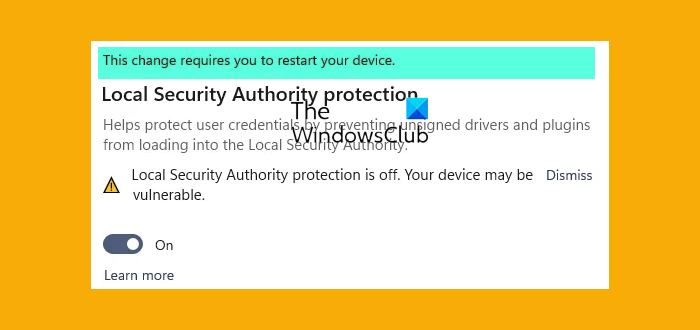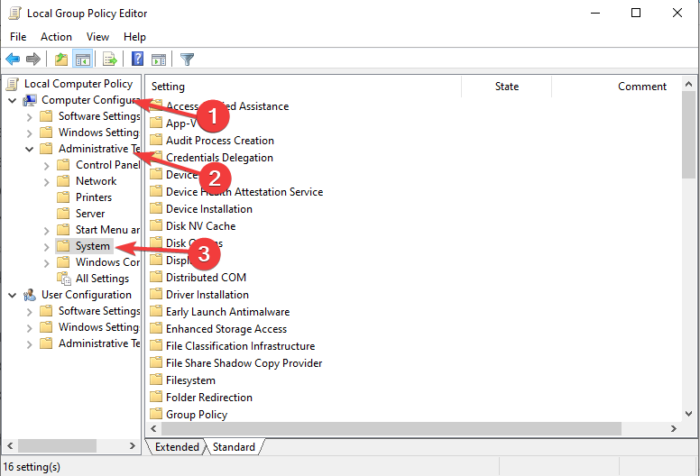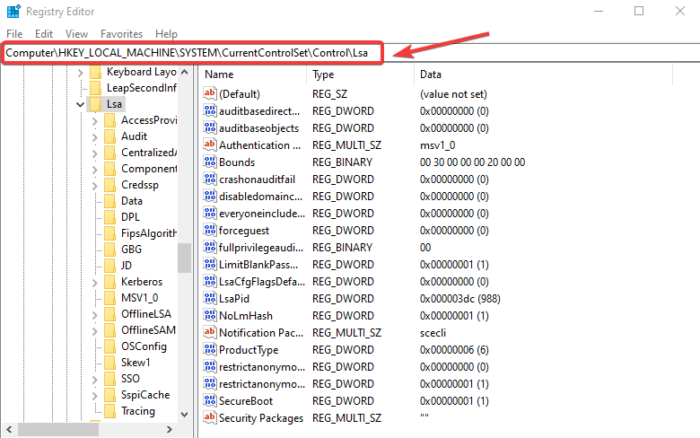In this article, we give you the working solutions to fix This change requires you to restart your device LSA error in Windows 11 when the Local Security Authority Protection is not registering a system restart.

Windows has advanced security features that protect users from offline and online threats. Like BitLocker Drive Encryption, User Account Control (UAC), and Windows Defender Firewall, LSA (Local Security Authority) ensures users’ integrity and confidentiality. The security features in Windows also ensure that the user data is available while preventing malicious activities from infiltrating the system.
Some users have reported that they get an error that the Local Security Authority Protection is off even when everything seems to be working and there is no threat in the system. They see message This change requires you to restart your device even when they have restarted the system. The system indicates that the Local Security Authority Protection is off, and even when you turn it on, the error doesn’t stop. It’s quite stressful, especially when you see your system seems to be vulnerable to malicious attacks.
The causes for this could be a Windows bug, corrupted system files, 3rd-party antivirus, or other security software blocking the Local Security Authority service. Before we fix this issue, ensure you know how to enable Local Security Authority Protection on your Windows PC.
This change requires you to restart your device LSA error in Windows 11
If the Local Security Authority Protection is off and not registering a system restart even when you have restarted your computer, then we need to look at solutions that will fix this:
- Update Windows 11
- Configure LSA using Local Group Policy Editor
- Modify registry entry values
- Run SFC and DISM scans
Let us look at these solutions in detail.
Local Security Authority Protection not registering a system restart
1] Update Windows 11
First, run Windows Update to see if Microsoft has released any patch. If this resolves the issue, good for you. If it does not, please read on.
2] Configure LSA using Local Group Policy Editor

Configuring LSA when it’s not working when the system says it’s off, or when it’s not registering a system restart ensures that the issue is resolved and your system protection is enabled. Here is how you configure LSA using the Local Group Policy Editor;
- Open the Run dialog box by pressing the Window button + R. When it’s open, type gpedit.msc and press Enter on your PC keyboard.
- Group Policy Editor will open.
- Go to Computer Configuration > Administrative Templates > System > Local Security Authority.
- Locate the Configure LSASS to run as a protected process option and double-click it to expand it.
- On the Policy Settings panel check the box next to Enabled.
- You will see a drop-down menu under the Configure LSASS to run as a protected process option, click on it and choose Enabled with UEFI Lock.
- Click OK and then Apply to complete the configuration.
NOTE: These settings ensure that the LSA runs as a protected service and its UEFI locked. The LSA cannot be disabled remotely. If you don’t prefer this setting, you can choose the Enabled without UEFI Lock option instead.
3] Modify registry entry values

If the Local Security Authority Protection not registering a system restart even when it’s turned on or after restarting your system, create a restore point and then follow the steps below.
Press the Windows button + R and type regedit.exe in the Run dialog box. Click OK or press Enter to open the Registry Editor. Click Yes when the User Account Control prompt pops up.
Go to the following path;
Computer\HKEY_LOCAL_MACHINE\SYSTEM\CurrentControlSet\Control\Lsa
If you can see RunAsPPL and RunAsPPLBoot, right-click on each and set the value of 2.
If you can’t see the two options above, you can create the registries and name them exactly as the option above and set the value as 2.
4] Run SFC and DISM scans
Sometimes everything else can be working properly and the only cause of Local Security Authority Protection not registering a system restart could be corrupted system files. To fix these files, you need to run SFC and DISM tools. The tools will find, repair and fix any damaged or corrupted system files that may be triggering the LSA not to work properly.
We hope one of the methods helps you fix This change requires you to restart your device LSA error in Windows 11.
Read: How to fix Local Security Authority cannot be contacted in Windows.
Why is my Local Security Authority protection not activating?
The reasons for your Local Security Authority protection not activating may range from third-party antivirus software or corrupted files. You can resolve this by running the full scan for system files using tools like SFC, DISM, or other third-party scanning tools. You may also check if LSA is properly configured in the Windows Registry Editor.
Read: Local Security Policy missing in Windows 11
What is the LSA protection warning?
You might get the LSA protection warning or notification when updating Windows Defender and it starts with something like – Local Security protection is off. If the Local Security Authority detects there is a data breach or unauthorized access of your system credentials or there is a possibility, it will give you a warning or a notification. You need to take an action to protect your system from any malicious attacks.
Read next: Ransomware Protection in Windows 11.
Leave a Reply